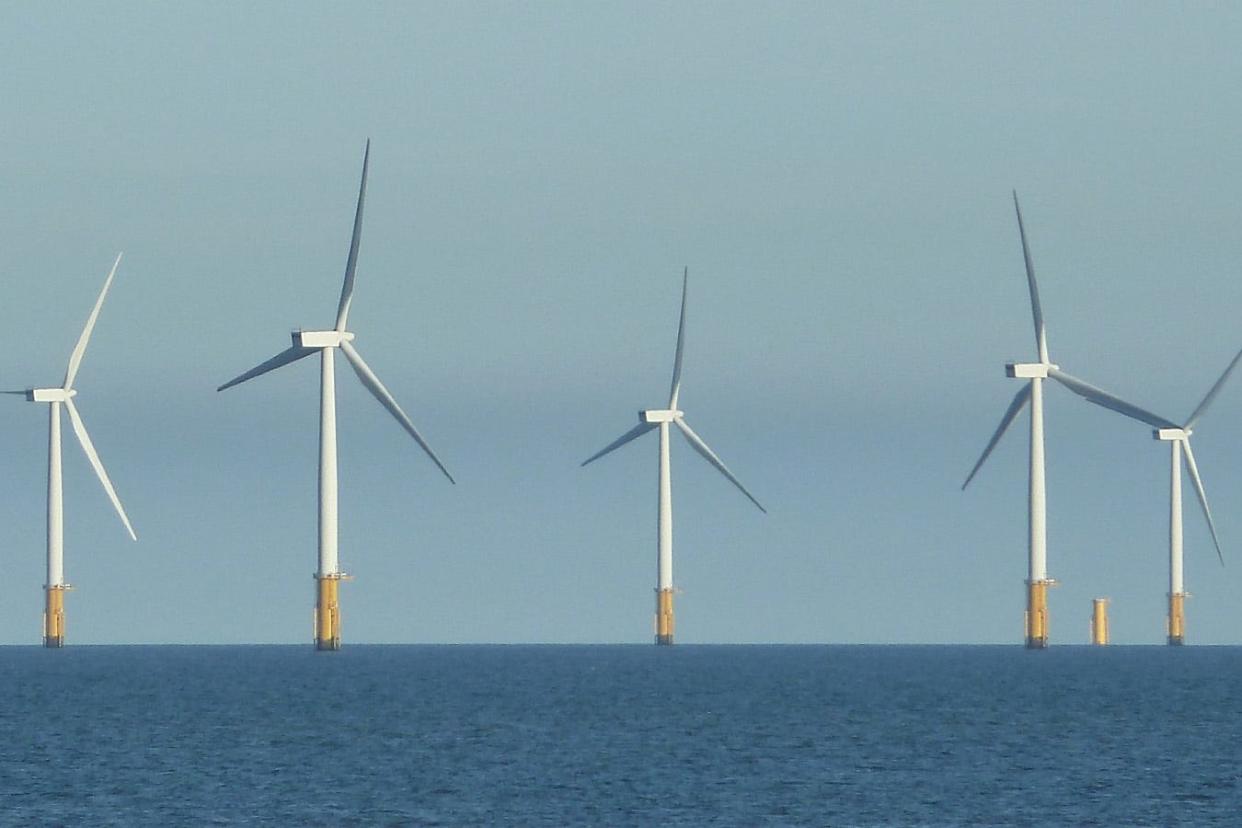Why development of Brunswick County's offshore wind farms has largely moved onshore

The wind hasn't stopped blowing, and the waters just off the Brunswick County coast are as prime a spot for an offshore wind farm as they always have been.
But after a flurry of announcements and activity in previous years, including offshore survey work last summer, things have been largely quiet on the ground and in the waters roughly 22 miles south of Bald Head Island.
That's not the case in Raleigh, though − and that's largely where the future of the Brunswick wind farms will be decided.
"Industry is waiting to hear if the N.C. Utilities Commission is going to green light offshore wind as part of the state's electricity mix in the coming years," said Katharine Kollins, president of the Southeastern Wind Coalition, a nonprofit that advocates for wind energy development in the Southeastern U.S. "It's hard for them to consider spending huge sums of money on these projects if they don't have some guarantees and cost certainty."
Pros and cons
Offshore wind is seen by clean energy advocates as a key component in helping governments de-carbonize their energy grids by reducing their reliance on dirty, greenhouse gas-spewing power sources like coal and natural gas. That includes North Carolina, which has a stated goal of reducing its 2005 level of carbon emissions by 70% by 2030 − although Duke Energy would like to see that goal pushed back to 2035 − and becoming carbon-neutral by 2050.
In 2022, TotalEnergies Renewables USA and a Duke Energy subsidiary paid the federal government a combined $315 million to lease nearly 140 miles of ocean off Brunswick County for a pair of huge wind farms. If fully developed, which would occur sometime in the early 2030s, the wind farms could produce enough power to supply 750,000 homes.
The pair of wind farms proposed for Long Bay will join another offshore wind farm planned for waters roughly 27 miles off Kitty Hawk on the Outer Banks. That project is farther along than the Southeastern N.C. wind projects.
While embraced by clean energy advocates, offshore wind farms have their critics. The projects are very capital intensive to build, although those costs drop dramatically once the turbines are up and running.
Some coastal residents are also concerned that the giant windmills will damage their ocean "viewscapes," although officials have said the Brunswick turbines will be next to invisible from the county's south-facing beaches.
Concerns also have been raised about the offshore turbines impacts on marine life, specifically marine mammals like the highly endangered North Atlantic right whale.
MIXING WHALES AND WIND: For highly endangered North Atlantic right whales, offshore wind brings a lot of unknowns

Offshore wind moves center stage
As the state's largest utility, Duke is largely driving the train on what sort of mix of power production sources will be needed to meet the state's carbon-reduction goals in the electricity sector while also keeping the lights on at an affordable price for consumers.
In 2021, Cooper signed an executive order that doubled down on the state's commitment to offshore wind power, with goals of 2.8 gigawatts (GW) off the North Carolina coast by 2030 and 8 GW by 2040 − enough to power roughly 2.3 million homes.
But Duke's initial Carolinas Resource Plan, basically a road map on how the utility proposed to reduce its future carbon emissions in both Carolinas, only had offshore wind as an option to meet future power needs.
That changed in January, however, when the utility, citing a projected surge in future electricity demand, proposed moving forward with plans to add 2.4 GW of offshore wind to its grid in the 2030s as part of its updated carbon plan.
That plan, which environmentalists and clean energy advocates are contesting as still being too reliant on old energy sources like natural gas plants instead of focusing on renewables like wind and solar, is now being reviewed by the utilities commission.
Duke spokesperson Bill Norton said the utility has asked regulators to allow it to gather additional information to make sure integrating power produced by offshore wind farms into the company's power grid is financially viable.
That work would include pricing information, an issue that derailed several other proposed offshore wind projects after companies decided they couldn't build and operate the wind farms at the contracted price utilities had agreed to buy the power at.
"TotalEnergies looks forward to the (utilities commission) order in December 2024 and additional approvals from N.C. and S.C. as necessary, which will inform the next steps for development activities in 2025," said company spokesperson Elizabeth Bennett in an email.
POWER PLAY: Thanks to Duke Energy, offshore wind is blowing back into NC's clean energy picture

'Moving in a positive direction'
Offshore wind projects, while certainly green, have run into some rough financial waters in recent years.
That stormy weather included efforts by companies to renegotiate their contracts with utilities due to rising construction costs, higher inflation and supply chain disruptions, surging interest rates, and the war in Ukraine. Those headwinds culminated in some wind developers in New York and New England deciding to walk away from projects rather than get stuck in money-losing endeavors.
But Kollins said the offshore wind sector is rebounding, with several large farms in the Northeast now sending power onshore and some of the financial and supply chain issues that plagued earlier projects getting ironed out as the industry matures in the U.S.
"There are a lot of good things happening for offshore wind now," she said. "Certainly challenges for the industry remain, but I think it’s definitely moving in a positive direction."
Reporter Gareth McGrath can be reached at GMcGrath@Gannett.com or @GarethMcGrathSN on X/Twitter. This story was produced with financial support from the Green South Foundation and the Prentice Foundation. The USA TODAY Network maintains full editorial control of the work.
This article originally appeared on Wilmington StarNews: NC regulators reviewing Brunswick County's proposed offshore wind farms
